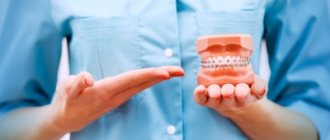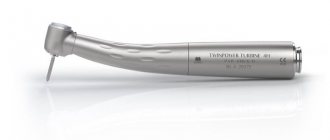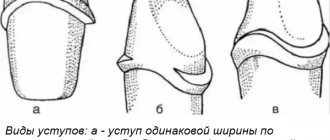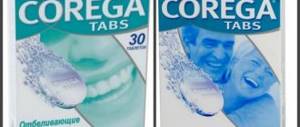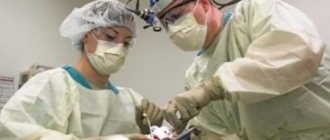Responsibilities of a dental therapist
A qualified doctor must directly report to the job description of a dental therapist. A person with a higher medical education in the specialty “Dentistry” can be hired for the position. The doctor should know:
- basics of asepsis and antiseptics;
- basics of organizing timely medical care;
- instrument sterilization technique;
- methods of providing first aid for bleeding, painful shock, collapse;
- resuscitation techniques;
- types of modern dental equipment, as well as instruments.
A qualified dentist must be familiar with the psychology of professional communication and be able to reassure the patient.
The main responsibilities of a dental therapist include:
- carrying out the initial patient appointment;
- qualified medical examination of the patient’s oral cavity;
- collection of biomaterial for further research;
- preparing the patient for physiotherapeutic procedures;
- providing first aid for oral injuries;
- performing dental restoration;
- treatment of diseases that do not require surgical intervention;
- maintaining medical records;
- storage and accounting of received drugs;
- conducting consultations with doctors of related specialties.
The instructions of the dentist-therapist also provide for rights. The doctor can make proposals to management to improve his medical activities, make decisions independently within his competence, and also supervise the work of junior subordinate employees. A dentist-therapist has the right to improve his qualifications and undergo training in related medical specialties.
The physician is responsible for the performance of his duties. The working hours of a dental therapist should not exceed 39 hours per week.
Supply of tools and materials
The assistant gives the doctor: a carpule syringe with anesthetic, instruments, materials that are needed at this stage of treatment, a machine tip with a bur.
Rules for administering anesthetic:
- the assistant hands over the carpule syringe, clearly naming the anesthetic,
- the doctor intercepts the syringe,
- the assistant removes the protective cap from the needle,
- both partners verbally and non-verbally relax the patient.
Ten rules for filing instruments
- Never pass instruments over the patient's head or face.
- The assistant passes the instrument over the patient's chest so that he does not experience discomfort.
- In the case of transferring a surgical instrument (for example, forceps for tooth extraction), it is allowed to transfer it behind the patient's head.
- Always hand the instrument to the doctor with the working end towards the tooth being prepared so that the handle of the instrument is in the closest and most convenient position for gripping to the doctor’s leading hand.
- Handle sharp instruments or instruments with two handles (forceps, scissors) carefully to avoid injury to the patient or doctor.
- Avoid collision of the assistant's hands with the doctor's hands.
- The required instrument must be placed in the hands of the doctor in such a way as to ensure interception and prevent the instrument from falling.
- The instrument must be given and received in such a way that the doctor’s hand makes as little movement as possible.
- Do not pick up the instrument if it has fallen to the floor.
- If the instrument falls on the floor, then you should note to the patient that you will replace the instrument with a sterile one. Otherwise, the patient may view the instrument falling as a situation that prevents treatment from continuing properly.
Note. When the assistant puts the protective cap on the carpule needle after injecting the anesthetic, he needs to be as careful as possible and not rush, so as not to injure himself - a needle prick. Please remember that the needle can become infected.
Typical shortcomings and errors in the aspect “Supply of tools and materials”
Assistant:
- untimely or late provides the doctor with the necessary instrument or material, because he does not know or does not understand what the doctor will need next;
- does not know the technique of mixing cements, impression materials (when manually mixing dental cements and impression materials, it is necessary to strictly take into account the ratio of components determined by the manufacturer, the mixing time and the homogeneity of the resulting material);
- hands the doctor instruments over the patient's face or head - there is a danger of injuring the patient and frightening him;
- the instrument is transferred within the patient’s field of vision, which causes psychological stress;
- is in a hurry or abrupt in movements with instruments - there is a danger of injury to the patient or doctor;
- does not announce the name of the anesthetic, material, instrument to the doctor - an error may occur, so the doctor is forced to double-check the assistant by asking questions.
Doctor:
- he himself takes the necessary tools from the cassette (tray), without relying on the timely help of an assistant or without trusting him;
- does not verbalize the request for the assistant to submit the necessary, relying on his intelligence, as a result, the treatment process slows down, the doctor begins to get nervous.
The difference between a dental therapist and allied health professionals
What is the difference between a dentist and a dental therapist? Dentist is the general name for all doctors who provide care related to diseases of the oral cavity. The main work of a therapist is related to the restoration of teeth and the treatment of gum pathologies. If it is necessary to undergo surgery, restore the correct position of incisors and molars in the dentition, or perform prosthetics, the patient is referred to another doctor.
There is a significant difference between a dentist and a dental therapist. A dentist is trained at a college and receives basic knowledge in the field of dentistry. Such a doctor can only conduct an initial examination, treat simple gum diseases, and place a filling on a tooth in the early stages of caries. The dentist can also talk with the patient about proper oral hygiene and the prevention of dental diseases. If a young specialist identifies diseases that are not within his competence, he refers the patient to a dentist-therapist.
Setting the lamp light at the beginning of treatment
Note. A dental unit lamp is a device for illuminating the surgical field in the patient’s mouth. The radiation intensity of the lamp in modern installations is more than 20,000 Lux. There is a light intensity regulator.
The assistant turns on and directs the light of the dental unit lamp, taking into account:
- will it be convenient for the doctor to work;
- Will the patient be comfortable?
Assistant actions:
- before turning on the lamp, offers the patient sunglasses,
- the lamp is first directed to the patient's abdominal area,
- then the lamp light turns on,
- the light of the lamp moves to the area of the lower third of the face.
Typical shortcomings and errors in the aspect “Installing the lamp light at the beginning of treatment”
Assistant:
- does not offer sunglasses to the patient before treatment;
- early, a few minutes before the start of the examination, turns on the lamp light;
- incorrectly sets the lamp light - either it hits the patient’s eyes, or is directed past the doctor’s working area in the patient’s mouth (the doctor is forced to change the position of the lamp);
- forgets to lower the installation bracket with the lamp down, forcing the doctor to get up from the chair to set the lamp light in the desired position.
Doctor:
- does not offer sunglasses to the patient before treatment unless the assistant does so;
- without waiting for the help of an assistant, he himself lowers the installation bracket with the lamp;
- sets the position of the lamp relative to the patient’s lower or upper jaw.
Diseases treated by a therapist
If you experience pain in the oral cavity, a visit to a dentist cannot be postponed. A good specialist will provide quick and painless dental treatment and will prevent the development of complications.
Caries
If a dentist can easily cope with the initial stage of the disease, then at an advanced stage of the pathological process one cannot do without the help of a dentist-therapist. The doctor removes damaged tooth tissue, disinfects the affected area, and also creates conditions for reliable fixation of the filling. Restoration involves restoring the integrity and functionality of an incisor or molar.
Pulpitis
This disease develops as a consequence of advanced caries due to untimely medical care. The destructive process reaches the soft tissue of the tooth. The job responsibilities of a dental therapist involve treating the disease in several stages. First of all, the specialist opens the tooth cavity to gain access to the affected nerve. Next, a paste is applied to “kill” the pulp. After a few days, the dentist removes the nerve, thoroughly cleans the canals using an antiseptic and performs a filling.
Pathologies of the oral mucosa
This category includes pathological processes such as stomatitis, cheilitis, gingivitis, glossitis, and periodontitis. The dentist's report must contain a description of the chosen treatment method, in accordance with the causes of the disease. Treatment of non-infectious pathologies is carried out using antiseptic solutions and ointments.
If the disease is caused by pathogenic microflora, the physician may prescribe antibiotics, antiviral or antifungal drugs. Additionally, the specialist prescribes physiotherapeutic procedures to quickly restore the affected mucosa.
Put away
The assistant cleans:
- in the patient’s oral cavity: rolls, balls, retraction threads, fragments, crumbs;
- contamination from the patient's face and glasses;
- contamination from working tools;
- moves the armrest and table of the dental unit at the end of treatment; instruments into the cassette from the dental unit table.
Typical shortcomings and errors in the “Remove” aspect
Assistant:
- waits until the doctor reminds him to help remove balls, rollers, retraction threads, fragments of hard tooth tissue, crumbs of filling material, dirt from the patient’s glasses and the doctor’s mirror from the patient’s mouth during treatment;
- does not notice dirt on the patient’s face remaining after treatment, hygienic cleaning, or taking impressions;
- does not warn the patient that he will remove something from his face, and does this unexpectedly for the patient;
- when necessary, does not comment on his actions for the doctor and the patient.
Doctor:
- acts for the assistant, removing balls, rollers, retraction threads, fragments of hard dental tissues, crumbs of filling material, dirt from the patient’s glasses and doctor’s instruments from the patient’s mouth;
- does not remind the assistant of the need for specific actions when he is not performing his duties.
When to see a dentist
You should not postpone a visit to the dentist when the following symptoms are observed in the oral cavity:
- bleeding gums;
- rashes on the tongue and inner surface of the cheeks;
- acute or nagging toothache;
- bad breath;
- darkening of the enamel of incisors and molars;
- change in tooth shape.
A dental therapist is also needed to conduct regular preventive examinations. It is necessary to visit a specialist twice a year, even if there are no unpleasant symptoms.
Track
The assistant monitors during the treatment session:
- the start and end time of the appointment;
- the patient's condition;
- the speed of the doctor’s actions;
- over time during individual manipulations: applying orthophosphoric acid, fluoride gel, taking impressions, carrying out the whitening procedure, etc.;
- for the availability of the necessary materials, tools, ball rollers on the table of the dental unit;
- ensuring the cleanliness of the doctor’s dental instruments (use a gauze ball to remove traces of contamination from a dental mirror, plugger, smoother, etc.);
- behind my actions: “Am I doing everything as I should”, “Am I having time to help the doctor”, “Am I disturbing him”, “Am I bothering the patient with my actions.”
Typical shortcomings and errors in the “Track” aspect
Assistant:
- does not pay attention to the patient’s well-being during treatment because he does not have time to do this or does not see signs of his physical discomfort;
- waits for reminders from the doctor regarding the preparation of what is needed for the next stage of treatment;
- waits for the doctor’s reminders to monitor the timing of the manipulation;
- waits for instructions to put dental instruments and table in order;
- does not monitor his actions to check their correctness, direction, speed, synchronized with the doctor’s actions.
Doctor:
- takes complete control over the patient's well-being, not trusting the assistant or not considering it necessary to include him in interaction with the patient.
Self-test questions
- What does the concept of “coordination of the actions of the doctor and the assistant” include?
- What does the patient experience and what conclusions does he draw from observing the coordinated actions of the doctor and assistant during treatment?
- Do you find it appropriate to report to the doctor in the presence of the patient before starting treatment that everything is ready for the appointment?
- Why does the doctor equip himself before starting treatment?
- What, how and in what sequence do the doctor and assistant do during the equipment before starting treatment of the patient?
- What is special about helping a surgeon put on gloves?
- When should doctor’s gloves be disinfected during an appointment?
- Why do the doctor and assistant need to properly occupy their work area?
- What is the sequence of actions when installing and turning on the light of the dental unit lamp before starting treatment?
- When should the assistant turn off the dental unit light during treatment?
- What does the assistant give to the doctor during treatment? When should he voice what he is giving to the doctor?
- What are the biggest mistakes assistants make when presenting instruments to the doctor?
- What does an assistant replace during a therapeutic appointment?
- What can cause physical and psychological discomfort to the patient during “replacements”?
- What modes of which devices does the assistant regulate during the treatment process?
- What actions of an assistant when working with a vacuum cleaner and saliva ejector can injure the patient and how?
- What mistakes does the assistant make that harm him when he works with the curing lamp in the patient's mouth?
- What does the assistant monitor during the treatment appointment?
- In what ways does the assistant interfere with the doctor’s work with the patient?
- Why doesn't the assistant think about how and when he interferes with the doctor's work?
Signs of a good specialist
Dental therapists see patients in thousands of specialized clinics. To make the right choice, you should know what criteria a good specialist must meet:
- positive professional reputation and good reviews from patients;
- extensive practical experience;
- friendly attitude towards patients.
- availability of specialized medical education confirmed by a diploma;
- certificates of completion of advanced training courses.
The desire to improve one’s professionalism, study new methods of treating oral diseases, as well as an individual approach to each patient is what makes a dental therapist a good specialist.
Occupying the work area
Five reasons for the doctor and assistant to be in their work area:
- both are comfortable working in the patient’s oral cavity;
- convenient to transfer tools;
- fatigue decreases;
- the risk of occupational diseases caused by overstrain of the musculoskeletal system (diseases of the musculoskeletal system, peripheral nerves, blood vessels) is reduced;
- the patient lies comfortably in a chair.
The doctor is located in the “8-12 o’clock” zone of the abstract dial (the conventional line from 12 to 6 o’clock runs from the head to the feet of the patient lying in the chair), which gives:
- overview of the surgical field;
- the ability to accept and give instruments to an assistant.
The assistant is located in the “2-5 o’clock” zone of the abstract dial, which gives:
- the ability to take and give instruments to the doctor;
- monitor the patient's condition.
The instrument transfer zone runs in the “5-8 o’clock” zone of the abstract dial, which allows you to:
- ensure the safety of the patient and demonstrate to him the coherence of the actions of the doctor and the assistant.
The patient must be placed in a chair in such a way that it is convenient for the doctor and assistant to work and so that the patient himself is as comfortable as possible.
When finding a position in the dental chair that is comfortable for the patient, you need to:
- check with the question “Are you comfortable?”;
- ask if you want to put a pillow under your head;
- suggest wearing sunglasses;
- suggest treatment with a rubber band;
- take into account data on the patient’s health (for example, the presence of somatic diseases with a chronic course - hypertension, vegetative-vascular dystonia, heart failure, bronchial asthma, etc., as well as pregnancy, old age, excess weight);
- install the headrest taking into account the patient’s height and posture.
Typical shortcomings and errors in the aspect “Occupying the work area”
Assistant:
- does not adjust the headrest of the chair for the patient’s comfort;
- does not know how (does not consider it necessary) to place a headrest comfortably, taking into account the patient’s posture and height;
- does not voice his actions in order to show a targeted attitude towards the patient: “Sergey Petrovich, allow me, I will adjust your headrest”;
- does not ask the patient if he is comfortable.
Doctor:
- he adjusts the headrest of the chair for the patient’s convenience (this is the assistant’s task);
- does not ask the patient whether he is comfortable in the chair;
- sets the chair tilt without taking into account the patient’s health data;
- occupies the work area in the “10-14 o’clock” area of the abstract dial, thereby crowding out the assistant;
- raises the chair high, without taking into account the convenience for the assistant, who has to work while standing.



